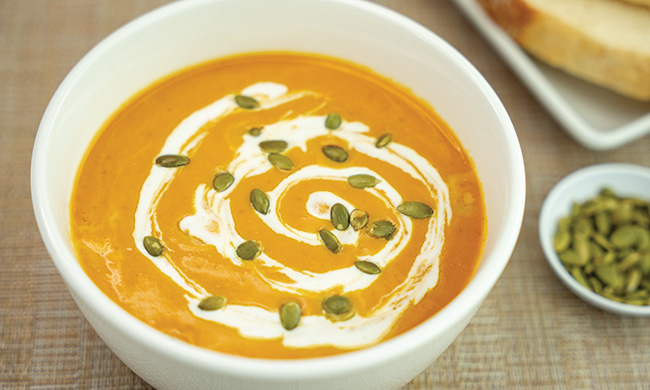Foodie News
P.F. CHANG’S EXPANDS ITS PRESENCE WITH NEW KHAR OUTLET: THIRD LOCATION IN INDIA, OPENS IN MUMBAI
MUMBAI, INDIA /PRNewswire/ — P.F. Chang’s, a global pioneer in elevated Pan-Asian cuisine, is delighted to announce its continued expansion into India, with the upcoming launch of its second dine-in location in Khar, Mumbai, third in India in 2024. This iconic location in the heart of Mumbai marks the commencement of another exciting culinary journey as P.F. Chang’s brings its world-renowned heritage, cravable flavors, and creative philosophies to the well-traveled Indian’s love for authentic Pan-Asian cuisine.
Gourmet Investments Pvt Ltd, a dynamic and forward-thinking organization, is proud to expand its partnership with P.F. Chang’s, across India. This exciting collaboration is set to introduce a unique dining experience that perfectly aligns with GIPL’s commitment to culinary excellence and innovation.
P.F. Chang’s heritage lies in the tale of a brand that has spent three remarkable decades celebrating life, family, and the art of savoring exceptional food; spanning over 20 countries with more than 300 restaurants worldwide. “We are excited to celebrate the grand opening of P.F. Chang’s in Khar West, Mumbai, and the third in India. Our relationship with GIPL continues to prosper and strengthen. The remarkable planned growth our partner is methodically executing only demonstrates their dedication to the plan we have put in place. We are equally committed to supporting their future expansions. Together, we aim to build on this momentum and bring more exciting experiences to our P.F. Chang’s family and valued customers in India,” said Rafik Farouk, Sr. Director – Global Brand Development at P.F. Chang’s
“We are thrilled to bring P.F. Chang’s to Khar, marking an exciting chapter in our journey to becoming a world-renowned destination for Asian cuisine. P.F. Chang’s is celebrated for its bold flavors, thanks to our unique cooking techniques. Unlike many Asian restaurants in India, we use a specialized wok technique, perfected over 2,000 years, that achieves 700°F. This ensures our dishes retain their nutritional value while intensifying the flavors. We look forward to becoming an integral part of the Khar community, sharing our passion for exceptional Asian cuisine,” said Ramit Bharti Mittal, Executive Chairman & Director, Gourmet Investments Pvt. Ltd. It’s a tradition upheld with honor, living up to the “Always served with honor” food philosophy. Guests will delight in their culinary journey with trademark dishes such as the Original Dynamite Shrimp, Chang’s Lettuce Wraps, Spicy Kimchi Fried Rice, Lo Mein, Orange Chicken & Mongolian Tenderloin.
P.F. Chang’s commitment to quality is evident as dishes are proudly served completely MSG- free, setting a high standard in the restaurant industry. Understanding the diversity of dietary preferences in India, P.F. Chang’s has curated a menu that caters to everyone. In the quest to delight Indian palates, P.F. Chang’s has introduced innovative dishes tailored to suit local tastes. In addition to a mix of vegetarian and non-vegetarian dishes, a special Jain menu is also offered.
However, excellence isn’t limited to food alone. Just as dishes are crafted with purposeful recipes and traditional techniques, the same is extended for the level of Artistry behind the Bar. Signature cocktails such as the Rising Dragon and Japanese Old Fashioned or mocktail.
Refreshers like the Chang’s Coconut Cooler and Samurai Fizz are designed to honor the diverse cultures and flavors that inspire, using premium ingredients, innovative presentation, and tableside theater to elevate the entire dining experience.
When you step into P.F. Chang’s, you’re not just entering a restaurant; you’re immersing yourself in a world of distinctiveness. Designed by Zebra Projects, a global design and architecture firm headquartered in London, the restaurant in Mumbai showcases the unique design elements that are synonymous with P.F. Chang’s worldwide. With a generous seating capacity of 140, comprising 110 indoor seats along with a private dining room and an additional 30 in the outdoor seating, provides an inviting ambiance that sets the stage for unforgettable dining moments.
An integral part of P.F. Chang’s identity is its iconic murals, each depicting unique Chinese tales. The Khar location features a neoclassical façade that leads into an elegant double-height interior with ornate balconies, high-arched windows, and a striking helical staircase. This architecture blends Chinese heritage with Bollywood glamour, creating a luxurious atmosphere that reflects Mumbai’s art-deco legacy. Guests are welcomed into a lush environment, highlighted by pink cherry blossom art and vibrant red, black, and gold murals framed by intricate brass screens. Key design elements include stunning murals, sculptural features, and subtle calligraphy on the ceiling, enhancing the authentic Asian dining experience.
Each visit promises a unique experience, with various enchanting spaces to explore: the al-fresco area, the main restaurant, a private dining room, and a mezzanine bar. Each setting offers a distinct ambiance, inviting guests to return and savor the diverse experiences that P.F. Chang’s has to offer.
Ajay Singhal, COO & Director of Gourmet Investments Pvt. Ltd., highlighted “Opening of the third P.F. Chang’s restaurant in Khar, Mumbai, is a significant milestone in the company’s expansion strategy within India. Achieving this within six months of our flagship launch in Lower Parel, Mumbai and subsequent opening in CyberHub, Gurgaon, P.F. Chang’s in Khar, Mumbai, marks our commitment to introducing the distinguished P.F. Chang’s dining experience to a growing audience. Khar becomes our second location in Mumbai and the third in the country, following the successful launch of our first in Lower Parel, Mumbai, and our second in CyberHub, Gurgaon. Our strategy focuses not only on enhancing the dining landscape but also on capitalizing on the emerging Casual Dining-Restaurant (CD-R) segment, where we foresee substantial opportunities for innovation and market leadership. With plans advancing for our fourth restaurant in Mall of India, Noida, set to open in the coming months, we remain dedicated to expanding our presence across the country.”

Embarking on an exhilarating journey in Mumbai, P.F. Chang’s sets its sights on expanding its footprint further in Mumbai and Delhi. Foresight extends beyond immediate horizons, with a long-term vision to establish multiple P.F. Chang’s restaurants across India over the next decade. Crafted as a versatile dining experience, P.F. Chang’s is thoughtfully designed to serve as a lunch and dinner venue, ensuring patrons can savor culinary delights at their convenience.
About GIPL:
Gourmet Investments Pvt Ltd (GIPL), a part of the Bharti Family office, was founded in 2012 with a clear mission to redefine India’s casual dining landscape. GIPL has earned a reputation for introducing the best of international restaurant brands to the country, setting new standards in terms of brand distinction, talent excellence, real estate expertise, and compliance.
GIPL’s current portfolio includes a carefully curated selection of prestigious international brands, such as PizzaExpress, Chili’s, and Ministry of Crab, all of which have been embraced by the discerning Indian palate. With 26 distinctively designed restaurants across key Indian cities, including Mumbai, Pune, Delhi NCR, Bengaluru, Hyderabad, and Chennai.
GIPL has become a symbol of professional management, recognized for its culinary innovations and world-class dining experiences within the Indian hospitality industry.
GIPL’s expertise spans across various aspects of restaurant operations, marketing, customer engagement, business management, and strategic alliances. With a deep commitment to quality and innovation, GIPL has earned its place as a true leader in the field.
About P.F. Chang’s:
P.F. Chang’s, founded in 1993 by Philip Chiang and Paul Fleming, is an internationally recognized multi-unit Asian culinary brand that celebrates the 2,000-year-old tradition of wok cooking. With roots in Chinese cuisine, the P.F. Chang’s menu spans across all of Asia, honoring cultures and recipes from Japan, Korea, Thailand, and beyond. Each dish offers a unique exploration of flavor, whether it’s a handcrafted cocktail, a wok-fired lunch bowl, or a celebratory multi-course dinner. P.F. Chang’s operates more than 300 restaurants in over 20 countries, including the United States, and continues to expand its footprint globally. For more P.F.Chang’s news, visit pfchangs.in and follow us on Facebook, Twitter and Instagram @pfchangsindia.
Fact Sheet:
What: P.F. Chang’s, Khar, Mumbai
Where: 442, 14th Rd, Khar, Khar West, Mumbai, 400052
Timings: 12 pm to 1:30 am
Contact Number: +918655780221 or +918655780220
Discover more from Daily News
Subscribe to get the latest posts sent to your email.
Food and Beverage
Unwrap the Holidays: Whataburger Launches 12 Days of Whatacheer With Daily App Deals
Celebrate the holidays with Whataburger’s 12 Days of Whatacheer! Discover daily in-app deals, exclusive to Rewards members, from December 12–23. Unwrap new menu favorites, BOGO offers, and festive savings—only on the Whataburger App.
12 Days of Whatacheer: Festive Deals for Rewards Members
How It Works
- Who: Whataburger Rewards members (sign up in the app if you’re not already!)
- When: December 12–23, with a new offer every day
- How: Open the Whataburger App, claim the day’s deal, and enjoy with your next order
Holiday-themed graphic reading ‘12 Days of WhataCheer’ on a red background with white dots. Below the text are images of Whataburger menu items: a Cinnamon Roll, Onion Rings, a Whataburger, a Whatafresher, a Honey Butter Chicken Biscuit, and a Strawberry Shake.
Why Join the Whataburger Rewards Fun?
Get Started
Discover more from Daily News
Subscribe to get the latest posts sent to your email.
Recipe of the Week
Holiday Desserts Just Got a Dairy-Forward Upgrade
Holiday Desserts: From festive cookies to indulgent dips, these delicious desserts bring people together to create memories that will last a lifetime. If you’re looking to impress guests, Santa Cookies are the ultimate treat. For a unique twist, try Gingerbread Dip, featuring vanilla Greek yogurt made with 100% grass-fed organic milk.
Last Updated on December 17, 2025 by Rod Washington

Holiday Desserts Just Got a Dairy-Forward Upgrade
(Family Features) Holiday desserts set the stage for seasonal delight and add a touch of joy to gatherings. From festive cookies to indulgent dips, these delicious desserts bring people together to create memories that will last a lifetime. If you’re looking to impress guests, Santa Cookies are the ultimate treat. Made with Maple Hill Salted Butter, they’re rich, soft and full of festive spirit. For a unique twist, try Gingerbread Dip, featuring vanilla Greek yogurt made with 100% grass-fed organic milk. Whether you’re hosting or deciding what to bring to the potluck, Maple Hill’s 100% grass-fed organic dairy makes it easy to whip up desserts that are as wholesome as they are delicious. Rich in nutrients and free from GMOs, hormones and antibiotics, each product comes from farms that prioritize regenerative practices as nature intended. With a 40% healthier ratio of omega 3:6 and 40% higher levels of CLA fatty acids compared to traditional organic dairy, you can feel good about sweet treats at the holiday table. To find more recipes, visit MapleHill.com.
Santa Cookies
Yield: 14 cookies- 1 cup (2 sticks) Maple Hill Salted Butter, at room temperature
- 1/2 cup brown sugar
- 1 tablespoon vanilla extract
- 1 large egg, at room temperature
- 2 1/4 cups all-purpose flour
- 1/4 teaspoon salt
- 1 teaspoon red food coloring
- mini chocolate chips
- mini red chocolate-coated candies
- 1/2 cup (1 stick) Maple Hill Salted Butter, at room temperature
- 4 ounces cream cheese, at room temperature
- 1 teaspoon vanilla extract
- 2 1/2 cups powdered sugar
- Preheat oven to 350 F and line two baking sheets with parchment paper.
- In large mixing bowl, beat butter, sugar and vanilla until light and fluffy. Add egg and beat until combined. Add flour and salt; mix until dough begins to form ball.
- Remove 1 cup dough and set aside. Add red food coloring to remaining dough.
- From red cookie dough, make one 1-inch ball and five 1/2-inch balls. From plain cookie dough, make one 3/4-inch ball and five 1/4-inch balls.
- On prepared baking sheet, place red 1-inch ball and gently flatten until 1/2-inch thick. Attach four red 1/2-inch balls for arms and legs. Attach plain 3/4-inch ball for head and gently flatten until 1/2-inch thick. Attach plain 1/4-inch balls for hands and feet. Shape remaining red 1/2-inch ball into triangle for hat and attach. Repeat with remaining dough, arranging cookies 2 inches apart on baking sheet. Add chocolate candies for eyes and buttons.
- Bake 12-15 minutes, or until lightly golden.
- To make frosting: In medium bowl, beat butter and cream cheese until light and fluffy, about 3 minutes. Add vanilla and powdered sugar; mix until combined.
- To decorate: Place half of frosting in piping bag with small tip to line Santa’s arms and legs. Place other half in second piping bag with small star tip to add Santa’s beard, hat and hands. Put small dot of icing between eyes and beard and place red mini chocolate-coated candy on face for nose.

Gingerbread Dip
Servings: 8-12- 4 ounces cream cheese, at room temperature
- 1/4 cup brown sugar
- 1/4 cup powdered sugar
- 3 tablespoons molasses
- 1 container (16 ounces) Maple Hill Vanilla Greek Yogurt
- 1 teaspoon ground ginger
- 1 teaspoon ground cinnamon
- 1 teaspoon ground nutmeg
- 2 cups whipped cream
- graham crackers
- fruit
- In medium bowl using electric mixer on medium speed, beat cream cheese and sugars about 1 minute. Add molasses and mix until combined.
- Add Greek yogurt, ginger, cinnamon and nutmeg; beat until combined. Fold in whipped cream and mix until fully incorporated. Refrigerate 1 hour before serving or overnight.
- Serve with graham crackers and fruit.
At our core, we at STM Daily News, strive to keep you informed and inspired with the freshest content on all things food and beverage. From mouthwatering recipes to intriguing articles, we’re here to satisfy your appetite for culinary knowledge.
Visit our Food & Drink section to get the latest on Foodie News and recipes, offering a delightful blend of culinary inspiration and gastronomic trends to elevate your dining experience. https://stmdailynews.com/food-and-drink/
Discover more from Daily News
Subscribe to get the latest posts sent to your email.
Food and Beverage
Usher in Cool Weather with Easy Pumpkin Soup
Pumpkin may be a classic fall flavor, but there’s no reason you can’t satisfy your craving for savory comfort foods all year long. Its smooth, creamy texture is a go-to ingredient for a variety of recipes, including this heartwarming and simple easy Pumpkin Soup.

Usher in Cool Weather with Easy Pumpkin Soup
(Family Features) Pumpkin may be a classic fall flavor, but there’s no reason you can’t satisfy your craving for savory comfort foods all year long. Forget spiced latte; with its wholesome nutrition and plenty of earthy flavor, pumpkin is the perfect ingredient for all kinds of flavorful dishes. It may inspire a warm, fall feeling but it’s much more than a seasonal product. Pumpkin puree can be enjoyed all year long mixed into your favorite baked goods, stirred into chilis or even scooped into your morning smoothie. The smooth, creamy texture of Green Giant 100% Pure Pumpkin, made in the United States with premium quality in mind, is a go-to ingredient for a variety of recipes, including this heartwarming and simple Pumpkin Soup. Simply simmer the pumpkin puree with coconut cream, vegetable stock, garlic and ginger for a soup that is comfort in a bowl. Explore new ways to enjoy seasonal recipes at greengiantvegetables.com.Watch video to see how to make this recipe!
 Pumpkin
Soup Cook time: 10 minutes
Servings: 4
Pumpkin
Soup Cook time: 10 minutes
Servings: 4- 1 can (15 ounces) Green Giant 100% Pure Pumpkin
- 1/2 cup coconut cream
- 1 cup vegetable stock
- 1 tablespoon garlic paste or 1 teaspoon garlic powder
- 1 tablespoon ginger paste or 1 teaspoon ground ginger
- salt, to taste
- pepper, to taste
- coconut rice, for serving (optional)
- bread, for serving (optional)
- In saucepan over medium heat, combine pumpkin, coconut cream, vegetable stock, garlic, ginger and salt and pepper, to taste. Stir until well incorporated, cook 10 minutes.
- Serve over coconut rice or with bread, if desired.
The fate of Lucky Supermarkets in SoCalLink: https://stmdailynews.com/the-fate-of-lucky-supermarkets-in-socal/
Discover more from Daily News
Subscribe to get the latest posts sent to your email.

